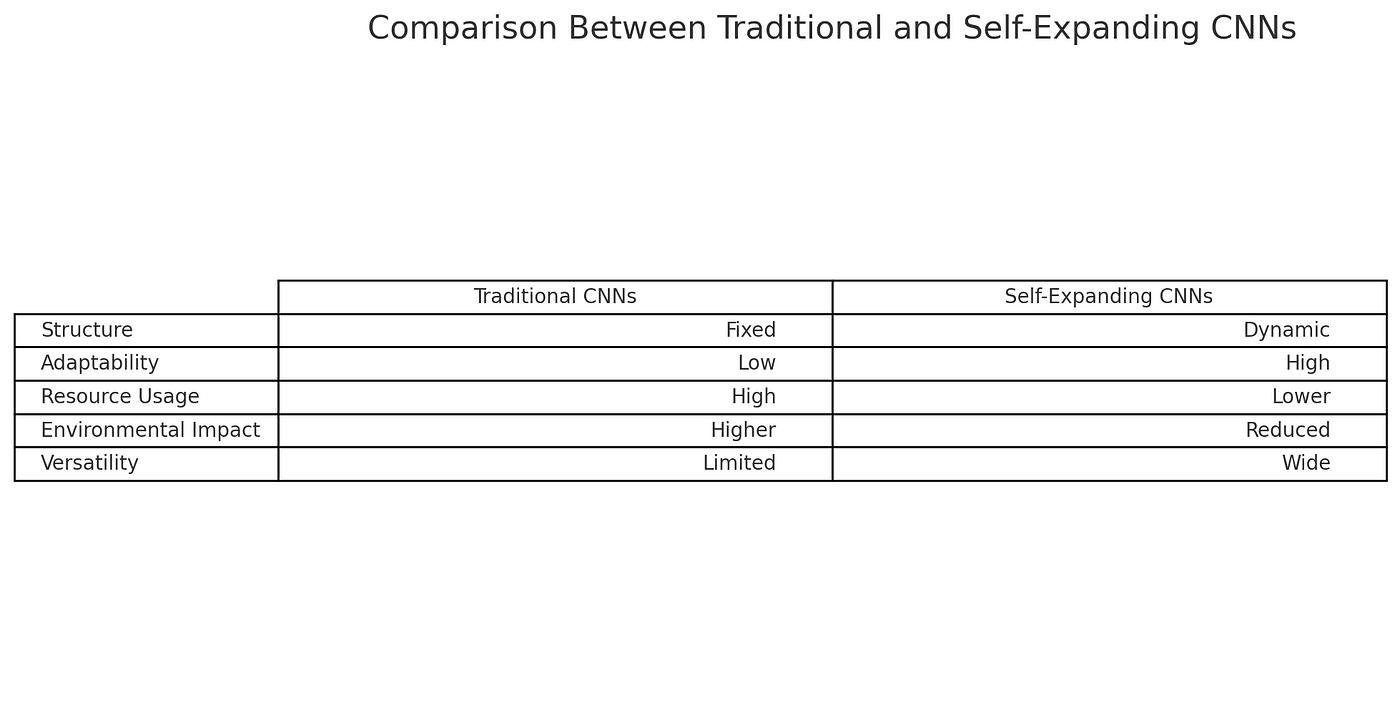
Imagine a computer program that can grow smarter on its own, like a brainy vine reaching for the sun. That’s the magic of self-expanding convolutional neural networks (CNNs). Picture your brain learning new things and adapting; these networks do something similar. Developed by a team of smart cookies at the University of British Columbia, they’re shaking up the world of artificial intelligence (AI). Traditional CNNs are like fixed train tracks, but these new networks lay down new tracks as they go, heading towards the horizon of endless possibilities.
The Brainy Trio
Why Expand? The Problem with Traditional CNNs
Traditional CNNs are like one-size-fits-all clothes; they don’t fit everyone perfectly. They’re designed with a set structure, which can be a bit rigid. Imagine trying to solve every problem with the same old hammer; sometimes you need a screwdriver or a wrench. This is where self-expanding CNNs come in. They’re like a Swiss Army knife, adapting and changing tools based on the task. This flexibility is key to solving a wider range of problems more efficiently.

To better grasp how self-expanding CNNs differ from traditional CNNs, let’s take a look at this handy comparison table above.
The Magic of Self-Expansion
Now, how do these CNNs expand? Think of it as a growing tree, sprouting new branches as needed. As the network is trained, it assesses what it needs to learn better and expands its architecture accordingly. It’s like if you could grow an extra arm to juggle more balls! This smart growth means the network becomes uniquely fitted to the task, making it more efficient and effective. It’s a bit like learning to play a new sport; you develop the muscles and skills as you practice.
Saving the Planet with Smarter Networks
Our planet is precious, and these self-expanding CNNs are doing their bit to protect it. Traditional AI training can be resource-intensive, like running a fleet of gas-guzzling trucks. But these new networks are more like electric cars, using resources more wisely. By adapting and expanding as needed, they avoid the environmental cost of training multiple, separate networks. It’s a step towards a greener, more sustainable future in AI, where technology not only gets smarter but also kinder to our world.
Where Can We Use This?
So, where can we see these clever networks in action? From spotting cats in photos to helping doctors diagnose diseases, the possibilities are vast. They can be used in video games to create smarter opponents or in security cameras for better surveillance. It’s like having a Swiss Army knife in your digital toolbox; whether you’re cutting a rope or opening a bottle, you’ve got the right tool for the job. The versatility of these networks opens doors to new innovations and improvements in everyday technology.
What This Means for Us
The innovation of self-expanding CNNs isn’t just about fancy tech; it’s about shaping a smarter, more thoughtful future. We’re standing at the dawn of a new era in AI, where machines don’t just learn; they grow and adapt, much like we do. This tech is a beacon of hope, signaling a world where AI can solve problems we haven’t even thought of yet. It’s a call to young minds everywhere: dream big, think creatively, and be a part of this exciting journey. The future isn’t just something to wait for; it’s something we’re building, one smart, adaptable neural network at a time.
About Disruptive Concepts
Welcome to @Disruptive Concepts — your crystal ball into the future of technology. 🚀 Subscribe for new insight videos every Saturday!







